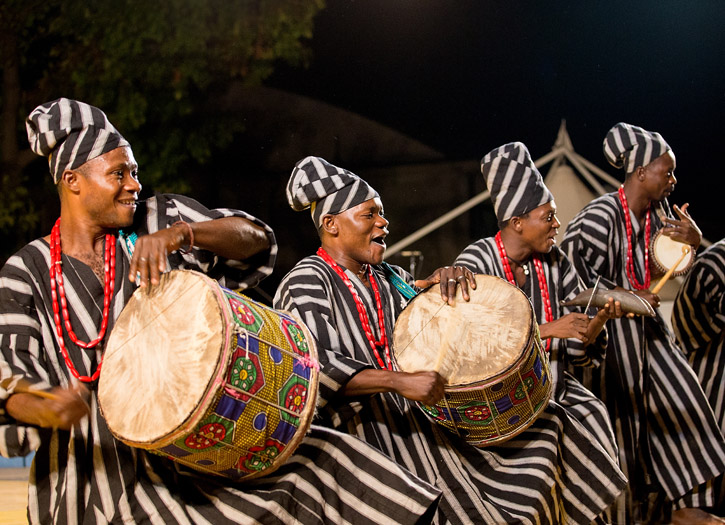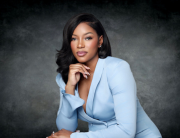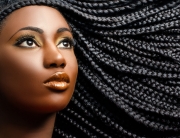Mbalax (or mbalakh) is the national popular dance music of Senegal and the Gambia. Mbalax has its sacred origins in the Serer people’s ultra-religious, ultra-conservative njuup music tradition—and their sacred ndut rite ceremonies. By the 1970s, it became a fusion with other popular music from the African diaspora, the West, and afropop such as jazz, soul, Latin, Congolese rumba, and rock blended with sabar, the traditional drumming and dance music of the Wolof of Senegal.
The traditional form of mbalax originated from the sabar, a Wolof genre that historically fused musical and cultural practices from different ethnic groups such as the Njuup, a religious Serer music. The popular dance form of mbalax developed in urban Senegal in the early 1970s. Like many other francophone West African countries the Senegalese popular music scene was partially influenced by soul, blues, jazz, R&B, and rock from the United States, varieté from France, Congolese rumba, and Latin pop from the Caribbean and New York.In this mix of African diasporic sounds Senegalese fans and musicians wanted their own urban popular dance music so they began singing in Wolof (Senegal’s lingua franca) instead of French, and incorporated rhythms of the indigenous sabar drum (see Mangin). Dancers began using moves associated with the sabar, and tipping the singers as if they were traditional griots.
Mbalax instrumentation includes keyboards, synths, and other electronic production methods. However, it is the Nder (lead drum), the Sabar (rhythm drum), and the Tama (talking drum) percussion, and widely influenced African and Arabic vocalistic stylings that continue to make Mbalax one of the most distinctive forms of dance music in west Africa and the diaspora. Jazz, Funk, Latin (especially Cuban), and Congolese pop music influenced the early sounds of Mbalax, today it is also influenced by RnB, Hip-Hop, Coupé-Décalé, Zouk, and other modern Caribbean, Latin, and African pop music.
Mbalax Dancing is popular in nightclubs and social gatherings as well as religious and life cycle events such as: weddings, birthdays, and naming ceremonies. The basic mbalax dancing involves pelvic gyrations and knee movements, but new movements arise as well, often associated with popular songs. Senegalese songs are usually unwritten, and certain instruments or musical styles are reserved for specific genders or age groups. In the past, only griots could perform music. Their traditional role was transmitting oral history, genealogies, and social rankings, diplomacy, and storytelling. Today, griots continue to participate in naming ceremonies, weddings, and funerals.
Music is performed using instruments such as drums, balafon, riti, Tama (talking drum), sabar drum. In the 1970s Western instruments and equipment such as the flute, electric guitar, piano, violin, trumpet, and synthesizer have been incorporated into the music, to accompany the dance. In addition to the instrumentation, humming, chanting, and singing (in either Wolof, French or English) are used to accompany the music that the dance is done to. The lyrics of mbalax songs address social, religious, familial, or moral issues.







Add Comment